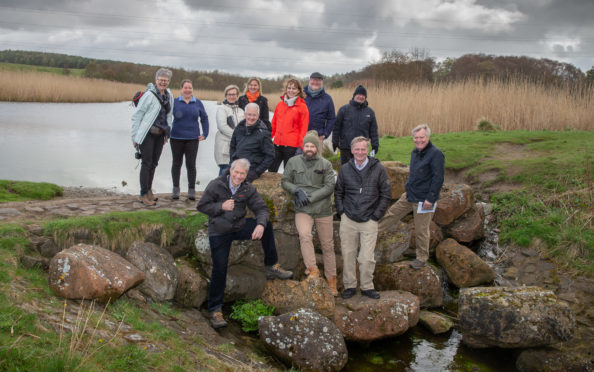Sustainable drainage systems might not float everyone’s boat, but a group of planners, scientists and engineers from Iceland have travelled all the way to Fife to have a look at one of the world’s finest examples.
A delegation is spending a week in Scotland looking at sustainable drainage systems, also sometimes called raingardens, and top of their agenda is the five square kilometre development in the Dunfermline Eastern Expansion – known internationally to experts in the field as DEX.
The DEX development began in the mid-1990s and was the first extensive development in the British Isles to use the drainage techniques for flood risk management and pollution control which are now such well-established features.
They have subsequently been employed in many other parts of the UK, and in other countries too.
Tour organiser Dr Brian D’Arcy, who was involved in the establishment of the features at Dunfermline in 1990s, explained: “The SUDS features are well known to academics and engineers, as successful flood risk management technology.
“But we are keen to encourage people to see them as community raingardens; multi-benefit features in the urban landscape which are wildlife habitats, attractive wild space in the towns and cities, as well as vital features in flood risk and water quality management.”
Rainfall is captured in a variety of features built into the drainage infrastructure, starting with permeable car parking spaces and roadside filter drains or grass swales, and progressing across the development to features such as “wetland detention areas” (community raingardens) which in turn drain to large retention ponds.
Finally, the cleaned up run-off flows out to local burns at controlled slow rates.
Tour leader Halldora Hreggviosdottir said delegates wanted to see the technology in practice first hand and learn about the planning, engineering and public services which guide it into routine use.
Dr Jennifer Carfae, secretary of the Scottish Universities Green Infrastructure Research Group of the Scottish Green Infrastructure Forum of SRUC, said: “The international reputation of the lead that Scotland has taken with this technology for managing flood risk and pollution control from the landscape is impressive and we are pleased to take the opportunity to show international delegations around the SUDS features (community raingardens) in Scotland.”









